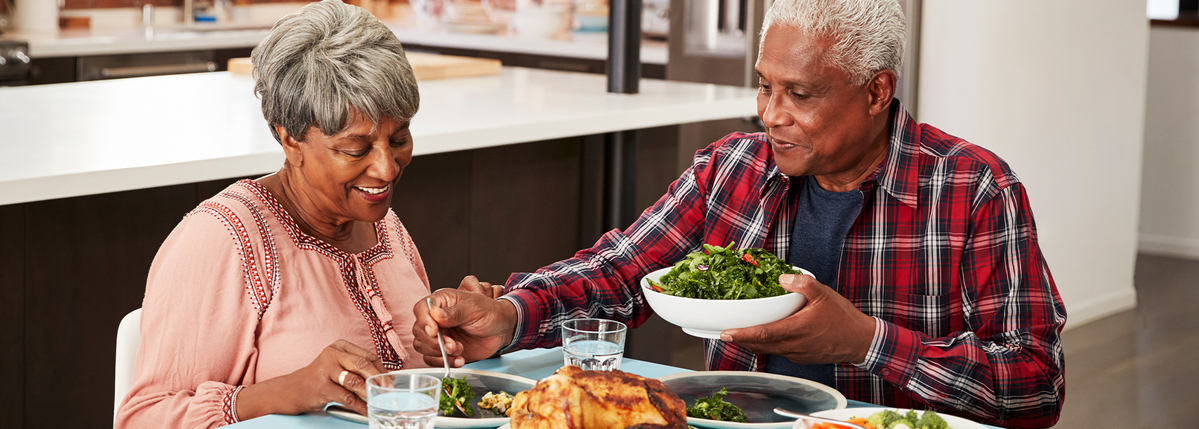How to Calculate Insulin Dosing for Meals
When living with diabetes, your body is unable to produce enough insulin or use it effectively to keep your blood glucose within normal levels, especially after eating. For people with type 2 diabetes who take insulin, knowing how much insulin to take before meals can reduce spikes after eating.
In this article, we’ll explain:
- How to calculate your insulin dosages based on your meals
- Terms such as insulin-to-carb ratio and the insulin sensitivity factor
- How to approximate insulin dosing using the Plate Method
- Questions to ask your doctor about carb counting and insulin
But before we begin, please make sure you speak with your doctor before making any changes to your medication. New to learning about mealtime insulin? Check out our guide here, first.
How to calculate insulin dosing for meals
Why is it important to know how much insulin you’re taking before your meals? There are several:
It helps you stay mindful of the number of carbs in each meal, including carbohydrates from beverages, dressings and sauces.
You learn how certain carbohydrates impact your blood glucose and how to adjust insulin and other medication needs accordingly.
Reinforces food label reading skills, which is essential to managing diabetes.
The way to learn how much insulin you need to cover a certain number of carbs is called the insulin-to-carbohydrate ratio, or as you’ll probably see in other places written as I:C.
Generally, 1 unit of insulin covers 12 to 15 grams of carbs, however, this can vary depending on each person. To learn about your insulin-to-carb ratio, work with your doctor or a nutritionist, or you can refer to guidelines and formulas by Gary Scheiner here. It’s important to remember that your insulin-to-carb ratio can change depending on your insulin sensitivity factor, which tells you how many points your blood glucose decreases per unit of insulin. Your body’s sensitivity to insulin depends on stress, food, exercise and more. Also, remember that your finding a ratio that works for you takes trial and error!
Example: Bolusing for a ham and cheese sandwich
Let’s break it down using a ham and cheese sandwich as an example. Our I:C is 1:15, meaning 1 unit of insulin covers 15 grams of carbs and we want to eat a sandwich that contains: 2 slices of whole wheat bread, ham, cheese, lettuce, tomato, mayonnaise and mustard, as well as a glass of milk. See below for the carbohydrates of the total meal.
Whole wheat bread (2 slices) – 30g of carbs
Ham – 0g of carbs
Cheese – 0g of carbs
2 lettuce leaves – 1g of carbs
2 slices Tomato – 1g of carbs
Mayonnaise – 0g of carbs
Mustard – 0g of carbs
Semi-skimmed milk (240ml) – 12g of carbs
Total Carbs: 44 g
This meal has a total of 44 g of carbs. If our ratio is 1 unit of insulin for every 15 g of carbohydrates, here’s how we’d determine how much insulin is needed to cover the carbs for this meal.
Total Carbohydrate in Food / Carbohydrate Ratio = Units of Insulin
44 g carbohydrates / 15 g carbohydrates (ratio) = 2.9 units of insulin.
2.9 units of insulin are required for this meal.
Using the Plate Method to approximate carb counting
There’s another way to approximate carb consumption using the Plate Method. The Plate Method is a visual way of ensuring you’re eating enough nonstarchy vegetables and protein while monitoring how many higher-carb foods are on your plate. This method also assumes you’re using a 9-inch dinner plate. General guidelines state 1 serving of carbs should be about 15 grams of carbohydrate.
With the Plate Method, you divide your plate into:
- Half non-starchy vegetables (broccoli, cauliflower, carrots, etc.)
- One quarter with lean protein (fish, turkey, chicken, tofu, eggs, etc.)
- One quarter with foods higher in carbs (rice, pasta, potatoes, beans, etc.)
Learn more about carb counting from a certified diabetes educator.
How protein and fats affect carb counting and insulin dosing
It is also important to know that although proteins and fats do not have a direct effect on carbohydrates, they do affect the way carbohydrates are absorbed. A food that contains carbohydrates in addition to a high protein or fat content will be absorbed more slowly but the effect will be longer, that is, it will not generate such a high blood glucose peak but it will last longer. You may need to adjust your ratios as you learn how various meals impact you.
Questions to ask your doctor
- How can I determine my insulin-to-carb ratio and insulin sensitivity factor (ISF)?
- Under what circumstances should I adjust my ratio and ISF?
- When does it make sense to use a set amount of units of insulin?
- Is the Plate Method more suitable for me?
- What if I miss a dose of mealtime insulin?
- What do I do if my blood sugar is high prior to eating?
- How do I calculate my insulin dosages while dining out?
Key takeaways:
- Learning how to calculate insulin dosing for meals can help you prevent blood glucose spikes after eating.
- An insulin-to-carbohydrate ratio determines how much insulin it takes to cover how many carbs are in a meal.
- The insulin sensitivity factor determines how many points (mg/dL) drops with 1 unit of insulin.
- The Plate Method segments your plate into nonstarchy vegetables, starchy carbohydrates and lean protein.
- Using the Plate Method, generally, 1 serving of carbohydrates should be about 15 grams of carbohydrate.
Hypoglycemia Awareness and T2D
This content was made possible with support of Lilly Diabetes, a Founding Partner of Beyond Type 2.





